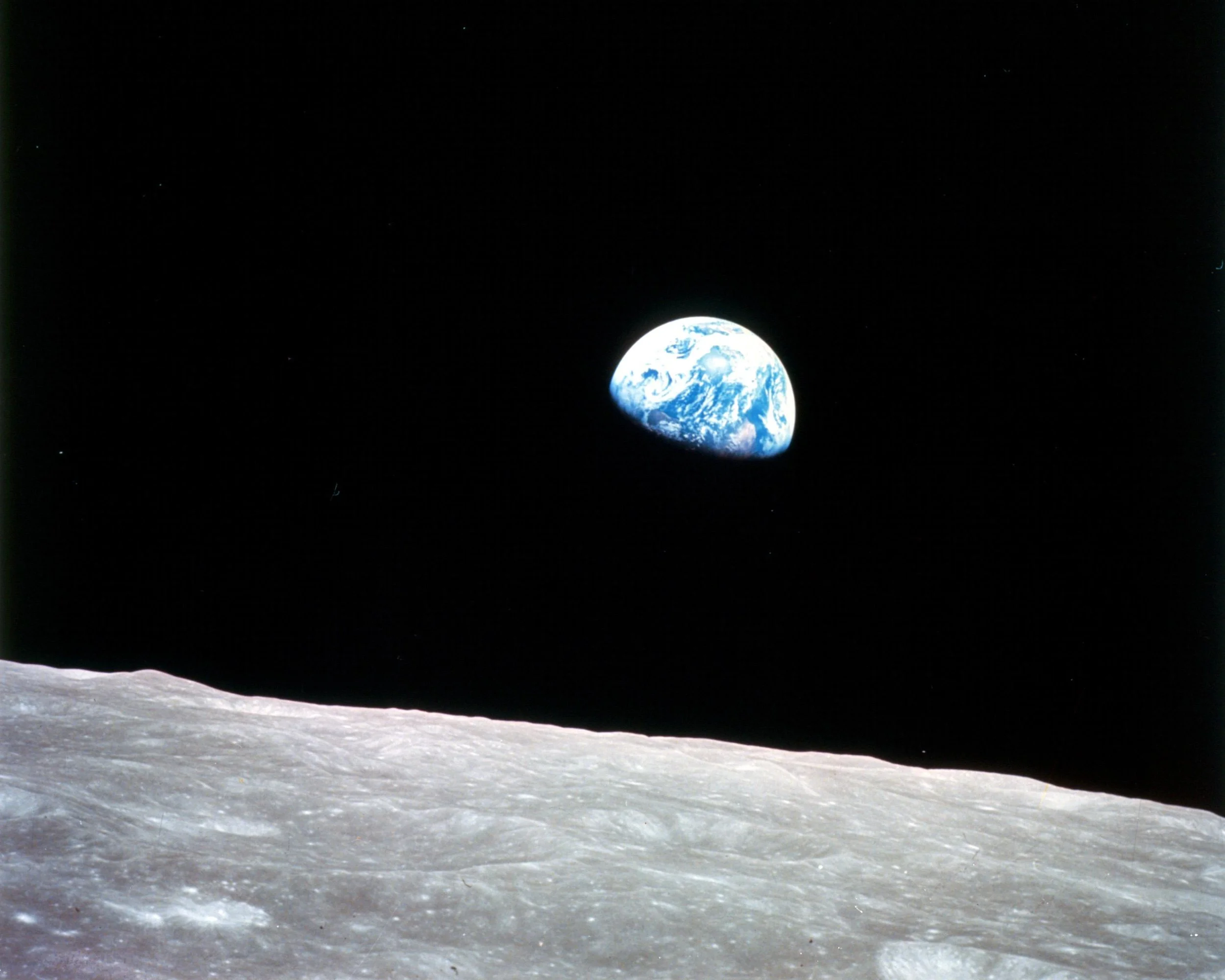Exile to Hell
Mateusz Matysiak
1968: Earthrise (Apollo 8). Image credit: NASA
In December 1968, the crew of Apollo 8 witnessed an extraordinary sight while orbiting the Moon: the illuminated Earth rising above the barren lunar horizon. The image they took was named Earthrise. It was the first color photograph of Earth seen from space. The photo depicts a vibrant yet fragile-looking Earth—a blue-and-white marble seemingly rising above the desolate, gray, cratered horizon of the Moon. Bathed in sunlight, the Earth reveals its continents, oceans, and swirling cloud patterns. A portion of the Earth is shrouded in darkness, indicating night. In stark contrast to the colorful, life-filled Earth, the barren, monochromatic lunar surface dominates the foreground of the image. The Moon's grim, ancient, unwelcoming landscape provides a dramatic backdrop that emphasizes the vibrant uniqueness of our home planet. Vast, inky black space surrounds both the Earth and the Moon, highlighting our world's isolation and preciousness.
This image is particularly powerful because it was the first time humanity had seen its home planet in full color from such a distant and unique perspective. The photo immediately evoked a sense of awe at the beauty of Earth and a profound awareness of its fragility and finite nature within the immense vacuum of space. Earthrise is widely credited with helping spark the modern environmental movement by reminding people that we all share one small, interconnected planet in need of protection.
Seven months earlier, in May 1968, Isaac Asimov, a true visionary of technological progress and societal advancement, published a science fiction story in Analog Science Fiction and Fact magazine. Exile to Hell (read my recent translation below) is set in a future society, where exile becomes the ultimate punishment for those who threaten its fragile technological existence. As they await the verdict in the trial of a man accused of damaging critical facilities in a fit of rage, two programmers play chess and debate whether this punishment is just and severe enough. The author draws a parallel between the two men's argumentative game and the eternal interdependence of both celestial bodies, which surprisingly relates to Earthrise. But there’s also a deeper, hidden and more ominous correspondence: between nature and technology.
By rights, the sight should be lovely. Just as the view of the Moon from Earth. However, it is important to remember that the Moon always shows us only one and the same face.
***
